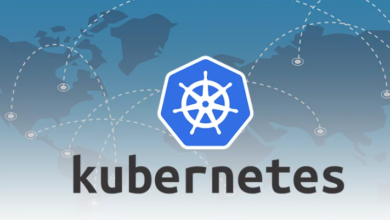
Dockers: A Game-Changer in Modern Software Development
In the rapidly evolving world of software development, one technology has emerged as a game-changer, transforming how developers build, ship, and run applications: Docker. Since its inception in 2013, Docker has taken the tech industry by storm, revolutionizing how we think about deployment, scalability, and efficiency. But what exactly is Docker, and why has it become so indispensable? This blog post delves into the intricacies of Docker, exploring its usefulness and the numerous benefits it brings to modern software development.
What is Docker?
Docker is an open-source platform designed to automate the deployment, scaling, and management of applications in lightweight containers. Containers are a form of virtualization but are more efficient and faster than traditional virtual machines (VMs). They package an application and its dependencies into a single unit that can run consistently across different computing environments.
At its core, Docker provides a standardized environment where developers can build and test their applications, ensuring they work seamlessly on any machine that runs Docker. This “build once, run anywhere” philosophy is a key reason behind Docker’s widespread adoption.
How Docker Works
Docker containers are created from images, which are lightweight, standalone, and executable packages that include everything needed to run a piece of software, such as the code, runtime, libraries, and environment variables. These images are built from Dockerfiles, which are text documents containing all the commands a user could call on the command line to assemble an image.
When an image is run, Docker creates a container that isolates the application from the underlying system. This containerization ensures that the application behaves the same regardless of where it’s deployed, whether on a developer’s laptop, a testing environment, or a production server.
Also Read
Usefulness of Docker
- Consistent Development Environments: One of the most significant challenges in software development is ensuring that an application works the same in different environments. Docker solves this problem by encapsulating the application and its dependencies in a container, ensuring consistency across various stages of the development lifecycle.
- Simplified Deployment: Docker containers can be deployed easily on any system that supports Docker, whether it’s a physical server, virtual machine, or cloud service. This flexibility simplifies the deployment process, reducing the potential for errors and speeding up time to market.
- Microservices Architecture: Docker is ideal for microservices architecture, where applications are broken down into smaller, independent services. Each service can run in its container, allowing for more straightforward development, testing, and deployment. This modular approach improves scalability and resilience.
- Efficient Resource Utilization: Unlike traditional VMs, which require a full OS for each instance, Docker containers share the host system’s OS kernel. This sharing reduces the overhead and allows for more containers to run on a single host, leading to better resource utilization.
- Portability: Docker containers are highly portable, meaning they can run on any environment that supports Docker, including on-premises servers, cloud providers, or even hybrid environments. This portability allows developers to avoid vendor lock-in and deploy applications across multiple platforms with ease.
Benefits of Using Docker
- Speed and Efficiency: Docker containers are lightweight and start up quickly, making it easier to scale applications and manage workloads. The speed and efficiency of Docker allow for rapid iteration and development, significantly reducing the time between writing code and running it in production.
- Isolation: Each Docker container runs in isolation, meaning that applications and their dependencies are separated from other containers on the same host. This isolation enhances security, as vulnerabilities in one container do not affect others, and it also allows for multiple versions of the same application to run simultaneously without conflict.
- Version Control and Reusability: Docker images can be versioned, allowing developers to track changes and roll back to previous versions if necessary. Additionally, images can be reused across different projects, saving time and effort in setting up environments.
- Collaboration: Docker enables better collaboration between development and operations teams (DevOps). Developers can create Docker images that work on their machines and then share them with operations teams, who can deploy them without worrying about compatibility issues.
- Continuous Integration/Continuous Deployment (CI/CD): Docker integrates seamlessly with CI/CD pipelines, allowing for automated testing and deployment. This integration accelerates the delivery process, ensuring that new features and updates are rolled out faster and more reliably.
- Scalability: Docker’s lightweight nature makes it easier to scale applications horizontally by adding more containers. Docker also integrates well with orchestration tools like Kubernetes, which manage the deployment, scaling, and operation of containerized applications in a cluster.
Docker has revolutionized software development by providing a robust, efficient, and consistent platform for building, shipping, and running applications. Its ability to simplify complex workflows, ensure consistency across environments, and enhance collaboration has made it an essential tool for modern developers. Whether you’re working on a small project or managing a large-scale application with microservices, Docker’s benefits are hard to ignore. As the technology continues to evolve, it is likely to remain a cornerstone of software development, enabling faster, more reliable, and more scalable applications.








